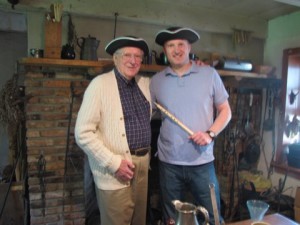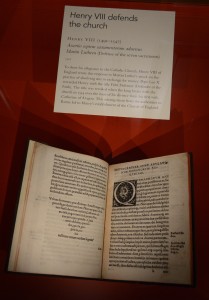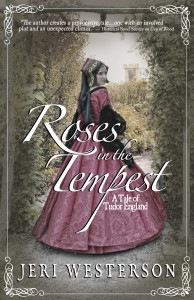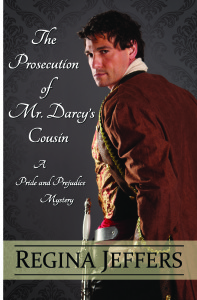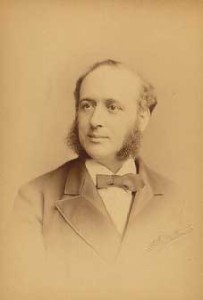 Relevant History welcomes 2015 Piedmont Laureate James Maxey, whose mother warned him that reading all those comic books would warp his mind. She was right. Now an adult who can’t stop daydreaming, James is unsuited for decent work and ekes out a pittance writing down his demented fantasies, including the science fiction/fantasy hybrid of the Bitterwood series, superhero novels like Nobody Gets the Girl, the secondary world fantasy of the Dragon Apocalypse series, and the steam-punk visions of Bad Wizard. James lives in Hillsborough, North Carolina with his lovely and patient wife Cheryl and too many cats. To learn more about James and his books, check out his web site and Piedmont Laureate blog.
Relevant History welcomes 2015 Piedmont Laureate James Maxey, whose mother warned him that reading all those comic books would warp his mind. She was right. Now an adult who can’t stop daydreaming, James is unsuited for decent work and ekes out a pittance writing down his demented fantasies, including the science fiction/fantasy hybrid of the Bitterwood series, superhero novels like Nobody Gets the Girl, the secondary world fantasy of the Dragon Apocalypse series, and the steam-punk visions of Bad Wizard. James lives in Hillsborough, North Carolina with his lovely and patient wife Cheryl and too many cats. To learn more about James and his books, check out his web site and Piedmont Laureate blog.
*****
Since Superman’s debut in 1938, superheroes have been an enduring fixture of pop culture. Superman started with a modest trio of powers, being fast, tough, and strong. Soon, his powers expanded, with flight, x-ray vision, and even super-breath. Some superheroes cloned these, like Captain Marvel. Others tried to carve out a niche. Plastic Man could change into anything, as long as it was red, yellow, and pink. Green Lantern had a magic ring that shot green flame. Doll Man could shrink to only six inches tall. By the 1960s, writers had to stretch to find new powers. Bouncing Boy turned into a large ball. Spiderman shot webs and clung to ceilings. This summer, we’ll get a film featuring Ant-Man, who fights crime on ant-back.
 Tales of supermen can be found in some of the earliest myths of mankind. Gilgamesh, Samson, and Achilles had their tales written, but countless heroes preceded them in oral traditions. Cave drawings dating to 13,000 BC depict human/animal hybrids. Oral traditions in Stone Age cultures that have endured until modern times, such as the Maori, feature tales of magically powerful heroes. Even American folklore has stories of Abe Lincoln’s almost superhuman strength.
Tales of supermen can be found in some of the earliest myths of mankind. Gilgamesh, Samson, and Achilles had their tales written, but countless heroes preceded them in oral traditions. Cave drawings dating to 13,000 BC depict human/animal hybrids. Oral traditions in Stone Age cultures that have endured until modern times, such as the Maori, feature tales of magically powerful heroes. Even American folklore has stories of Abe Lincoln’s almost superhuman strength.
Why do these stories persist?
Evolution should leave us with an instinctive sense of our physical limits. Most of us would hop off a two-foot wall without thinking about it. Few of us would jump from a twenty-foot wall. We don’t expect the real humans we encounter to jump a mile into the sky, or lift a dumpster, or shrug off bullets.
My theory is that we owe our interest in these stories to another gift of evolution: we’ve evolved to be excellent at recognizing patterns. This is a powerful tool for a hunter-gatherer. It makes us able to spot game trails, and lets us know that when we find one type of flower in an area, we can start digging around for edible roots. But, it also left us looking for patterns of larger, more impressive events in the natural world. What explains the thunder and lightning? Why does the ground sometimes shake and belch flame? Our longing to see patterns left us ill-prepared to settle for the answer that, sometimes, these things just happen. Certainly, there must be something we’re doing that causes the thunder. Is it because I stole that gourd from my neighbor’s garden? Is it because my child was disrespectful of his grandfather? Perhaps it’s a warning of a coming attack from the tribe on the other side of the ridge.
Again and again, our ancestors found enough seemingly meaningful patterns that they discerned intelligence behind these mysterious events. Given our ability to see faces in something as simple as a colon followed by an end parenthesis, we couldn’t help but notice the faces in the clouds, in the rocks of the mountain, or on the moon. In culture after cultures, we gave names to the personalities controlling these forces of nature—Zeus, Thor, Ra—and gave them human shapes in our minds. We might seldom have caught a glimpse of them directly, but we saw all the signs that they were there.
Protection and punishment
We also knew, almost universally, that they were deeply concerned with our actions. We could make them angry by being unfaithful to our mates, or please them by offering up lambs and chickens. Behave well, and the powerful beings would protect us. Transgress, and punishment would surely follow.
This obsession with protection and punishment is, of course, the other thing Superman borrowed from his demigod predecessors. From his first adventure, he was a champion of the helpless, freeing an innocent woman from death row, then roughing up a wife-beater. Bank robbers fell before his fists, but he wasn’t above roughing up crooked industrialists or slapping around a corrupt politician. He was, perhaps, a bully, treating every problem he encountered as something he could solve with a hard enough punch. But, he was our bully. He was on our side.
In retrospect, Superman’s early adventures look hopelessly naïve. You can’t roughhouse a governor into granting a pardon and expect it to end well for anyone. Confessions gained by holding people by their ankles off the corners of tall buildings don’t hold up well in court, nor does the testimony of a man wearing colorful underwear who refuses to reveal his real name. But, that’s the cynical adult in me who shakes his head at the very idea of Superman.
But when I was a child? I slept a little better with a Superman poster on my wall. He was evidence to my young mind that there was someone big and strong looking out for the little guy. All was right with the world. I’m glad there’s still part of me that hasn’t let go of Superman.
*****
 A big thanks to James Maxey. He’ll give away a trade paperback copy of Nobody Gets the Girl and Burn Baby Burn to someone who contributes a comment on my blog this week. I’ll choose the winner from among those who comment by Friday at 6 p.m. ET. Delivery is available within the U.S. only. (corrected)
A big thanks to James Maxey. He’ll give away a trade paperback copy of Nobody Gets the Girl and Burn Baby Burn to someone who contributes a comment on my blog this week. I’ll choose the winner from among those who comment by Friday at 6 p.m. ET. Delivery is available within the U.S. only. (corrected)
**********
Did you like what you read? Learn about downloads, discounts, and special offers from Relevant History authors and Suzanne Adair. Subscribe to Suzanne’s free newsletter.


